Summarizing is such an important part of the reading process. We want to make sure our students have summarizing strategies to help them summarize both fiction and nonfiction.
When students summarize a text, they are able to pull out key details and understand the main gist of the text. They can categorize details as either essential or non-essential. They can recount a story from beginning to end. They can understand the main point the author is trying to communicate.
Summarizing can also be one of the most challenging comprehension skills to teach.
If you’re looking for some fresh summarizing strategies to help your students summarize fiction stories, I have five summarizing strategies you can teach your students.
5 Summarizing Strategies for Fiction Texts
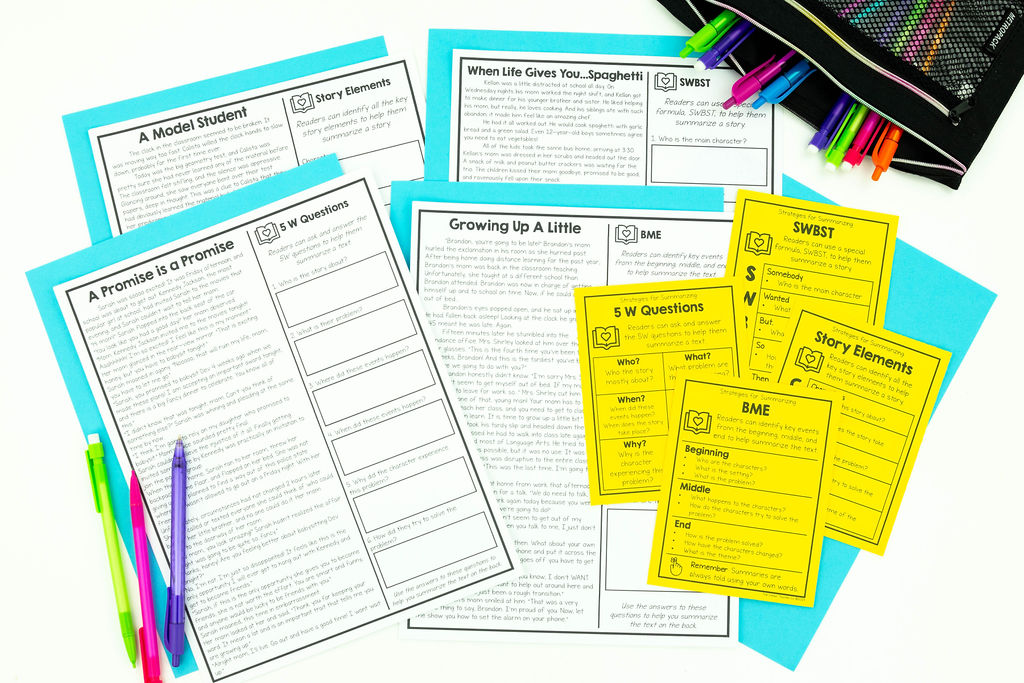
Summarizing Strategy #1 – SWBST
With this strategy, students will identify the Somebody (who), Wanted (what do they want), But (what challenges do they face), So (how do they try to solve the problem), Then (how is the problem solved in the end) in the text.
This can be a great strategy to help students summarize a story. This simple strategy gives students a starting place. If they aren’t sure what to include in their summary, this framework helps them identify the key details in a fiction text.
It is important to understand that not every fiction text can be summarized using the SWBST strategy. Not every story has a main character that WANTS something.
Make sure that students understand that this is just one of many summarizing strategies they can use to summarize fiction texts.
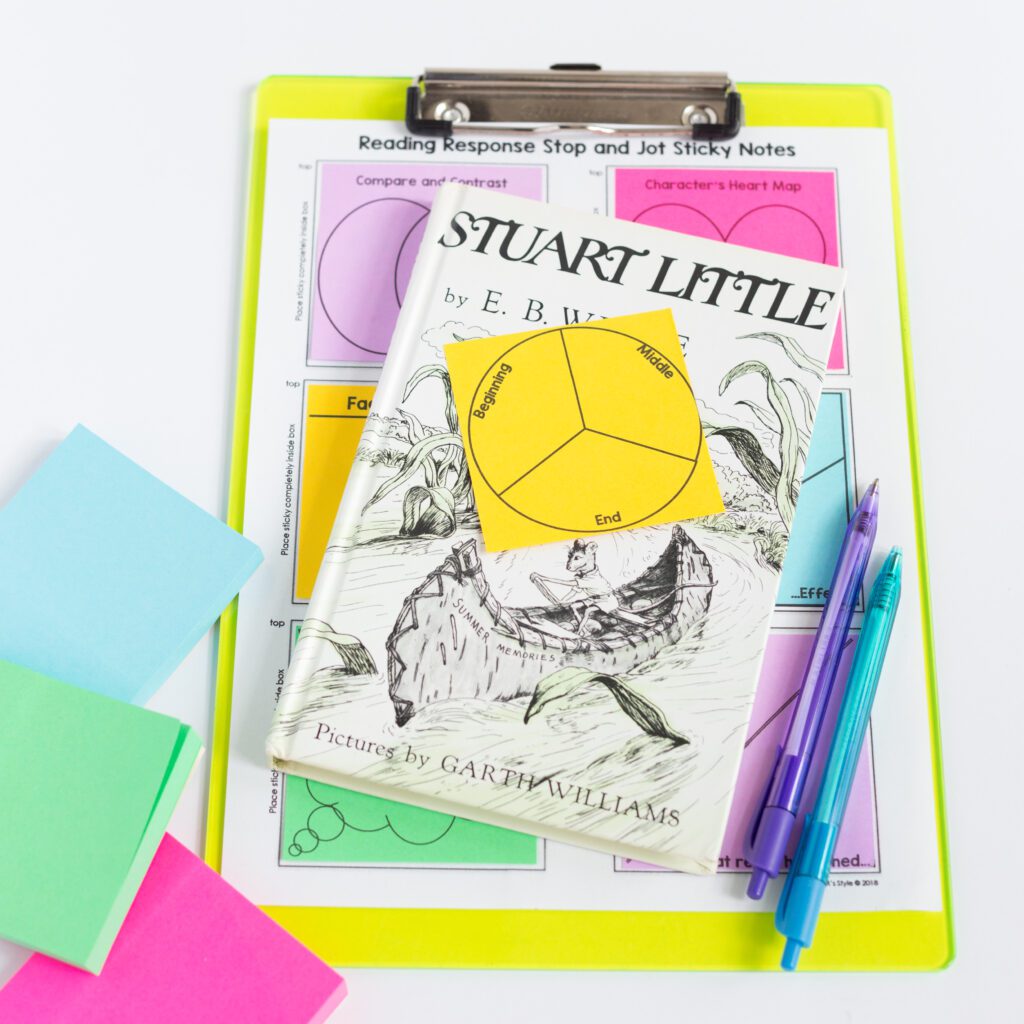
Summarizing Strategy #2 – BME
Another summarizing strategy for fiction is teaching students to focus on the important details in the beginning, middle, and end of a story.
This strategy is one that typically works with any fiction story. As long as the text doesn’t include flashbacks, students should be able to use this strategy to summarize any story.
With this strategy, students learn what details they should focus on identifying in the beginning, the middle, and the end. It is like their roadmap for reading a fiction text.
Once students have identified the details from each section of the text, they can combine them to form a clear and concise summary.
If you would like a set of small group lesson plans that help you teach the BME strategy (and all the other ones mentioned in this post) this set of summarizing small group lesson plans can help guide your lessons.
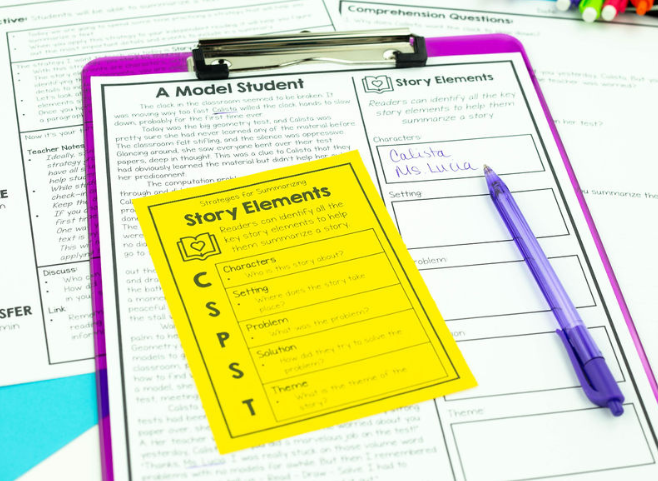
Summarizing Strategy #3 – CSPST
One of my favorite summarizing strategies to teach students to use with fiction texts is CSPST. With this strategy, students look for the Character, Setting, Problem, Solution, and Theme. Then they use these details to help them develop a summary for the story.
This strategy is great and will naturally fit into your fiction unit.
This strategy works for fiction stories where each one of these elements is clearly defined. It also is usually best to save this routine until after you have explicitly taught students to identify the theme of a story.
Students usually feel pretty confident in their ability to identify these basic story elements, which can also give them confidence in attempting a summary of a story.
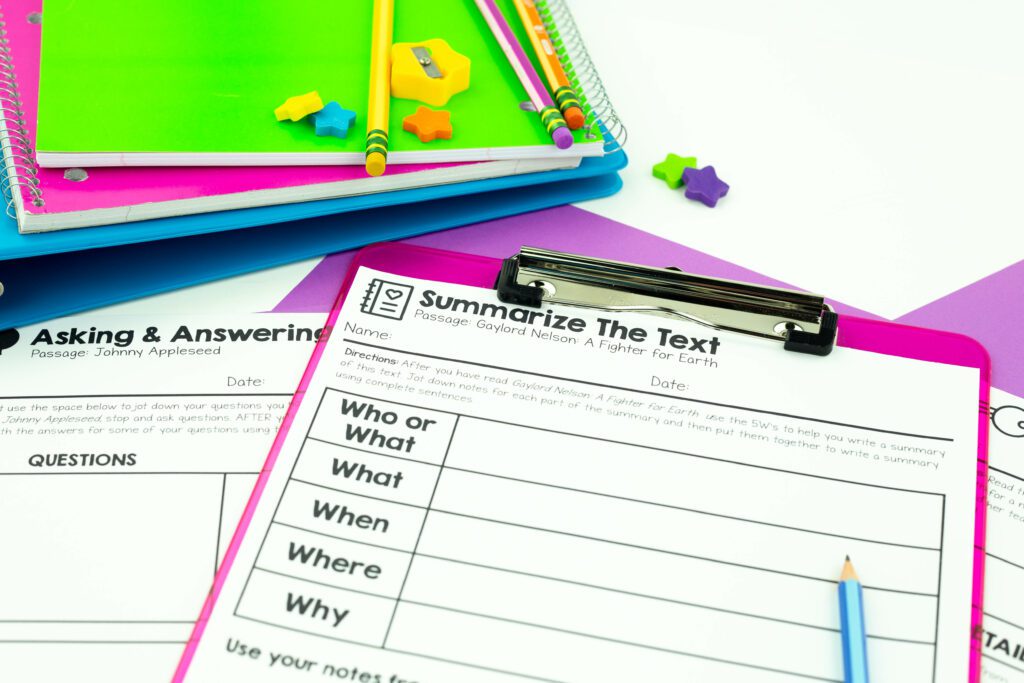
Summarizing Strategy #4 – 5W+H Questions
Another strategy that can help students write a summary of a story is to have students answer the 5W+H questions. If students can identify the Who, What, When, Where, Why, and How of the story, they can easily put those details together to form a summary.
This strategy can work with both nonfiction and fiction texts if the nonfiction text is highlighting the life of a person or teaching about an animal.
When you are teaching this strategy to your students, it can be helpful to let them know that the answer to these questions can help them summarize the text, but they don’t necessarily have to have an answer to every question in their summary.
Even if they can answer three or four questions, that can provide information to help them summarize a text.
Summarizing Strategy #5 – Include/Exclude
When talking about summary, it can be helpful for students to think about what details they should include and exclude from the text. Simply making a T-Chart can help them determine what needs to be included and what can be left out of their summary.
This strategy helps students determine importance and determine what details are essential and nonessential to the story.
Now that you have a bank of summarizing strategies, you can pick and choose which ones you think would help your students the most. Using a combination of these teaching strategies throughout the year is a great way to keep summarizing fresh for your students and deepen their understanding of the texts they read.
Put it Into Practice:
If you’re ready to teach these summarizing strategies to your students, you can take these two steps.
- Read this blog post to learn three strategies to help your students summarize nonfiction.
- Check out this Set of Summarizing Strategies Mini-Lessons on TPT. It includes mini-lessons, slides, anchor charts, and graphic organizers to help you teach these strategies to your students.
Happy Teaching!
Sentence Writing Routine Free Sample
If your students struggle to write at the sentence level, this new literacy routine is going to be your new best friend. Each day of the week your students will engage in a quick (yet effective) sentence writing task that will help them become more confident and creative writers. Say goodbye to fragments and boring sentences, and say hello to complex sentences with lots of details!
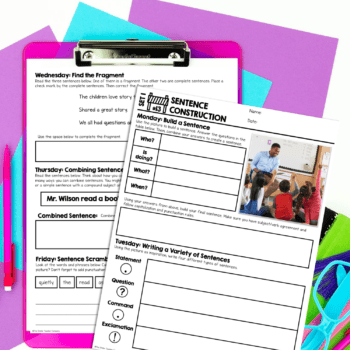


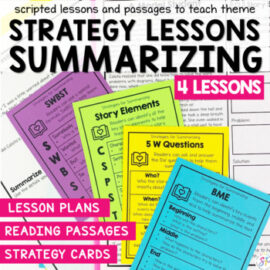
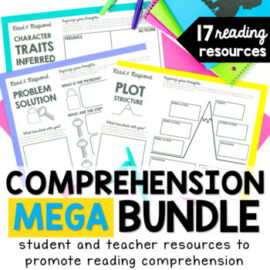
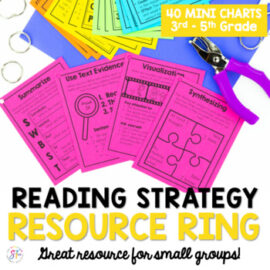
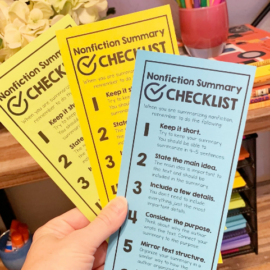
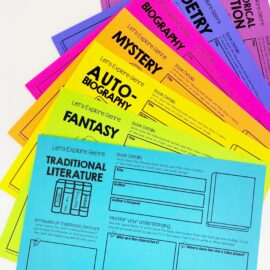
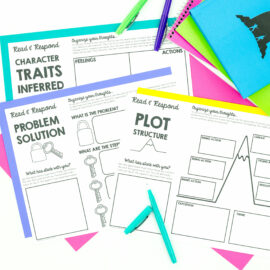









Leave a Comment
You must be logged in to post a comment.